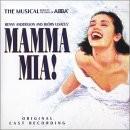Overture/Prologue Lyrics
Overture/Prologue
SOPHIEI have a dream
A song to sing
To help me cope
With anything
If you see the wonder
Of a fairy tale
You can take the future
Even if you fail
(spoken)
Sam Carmichael, Bill Austin and Harry Bright
Good luck
Song Overview

Personal Review

“Overture / Prologue” opens Mamma Mia! like the sun edging over a horizon—quiet at first, yet promising colour. Lisa Stokke’s soprano catches the lyric “I have a dream” and lifts it gently, almost conspiratorially, toward every seat in the house. Within three minutes, the track sketches the full emotional palette of the show: wistful hope, fizzy energy, and that faint ABBA-scented breeze of nostalgia we all pretend not to chase. This is the moment, I tell friends, where the orchestra hands you a seashell and you swear you can hear the Aegean.
Song Meaning and Annotations

The prologue stitches together two threads. First, a brisk instrumental overture vents snippets of ABBA hooks like perfume test-strips—“Dancing Queen,” “Mamma Mia,” even a hint of “Voulez-Vous.” Second, Sophie (Stokke) steps forward and sings “I have a dream / a song to sing.” The line sounds lifted from a diary but lands like a declaration of self-authorship. The juxtaposition is neat: orchestral montage glances backward at pop history while Sophie stares forward to her own future.
Stokke’s phrasing is almost spoken on “To help me cope with anything,” a decision that makes vulnerability sound matter-of-fact. Then the curtain-breaching spoken roll call—“Sam Carmichael, Bill Austin, and Harry Bright”—springs the story’s conflict in one breath. It’s a dramaturgical sleight-of-hand: exposition disguised as a send-letter.
Musically, Martin Koch’s arrangement lays the melody over muted strings and soft electric piano before warming into acoustic guitar—the same folk-pop timbre ABBA used on their 1979 single “I Have a Dream.” The emotional arc mirrors the harmonic one: from solitary reflection (A-major hush) to optimistic expansion (D-major lift).
“You can take the future / Even if you fail.”
That couplet reads like a bumper sticker, yet in context it feels defiant. The idea that failure can’t revoke tomorrow resonates for anyone who ever pinned hopes on a cliff-edge letter, job application, or daring confession.
Verse Highlights
Verse 1
The verse plants metaphor over literal ground—dreams and fairytales as tools for resilience.
Chorus
There is no grand chorus here, only a subdued reprise that functions like a held breath before the curtain whooshes open.
Song Credits

- Featured: Lisa Stokke as Sophie Sheridan
- Producers: Nicholas Gilpin, Martin Koch
- Composers/Lyricists: Benny Andersson, Björn Ulvaeus
- Release Date: November 1, 1999
- Genre: Pop-musical theatre blend
- Length: 2 min 56 sec
- Instruments: strings, electric piano, acoustic guitar, French horn, subtle percussion
- Label: Polydor / Littlestar
- Mood: hopeful, anticipatory
- Track #: 1 on Mamma Mia! Original Cast Recording
- Language: English
- Album: Mamma Mia! Original Cast Recording
- Music Style: Orchestral pop-theatre
- Poetic Meter: Mainly iambic with conversational loosening
- Copyrights: © 1999 Littlestar Ltd.; ? 1999 Polydor Ltd. (UK)
Songs Exploring Themes of Dreams & Identity
While Sophie’s confession leans on fairytale optimism, other musical numbers wrestle with similar ideas in different shades.
“Corner of the Sky” – Pippin (Stephen Schwartz)
The refrain “I’ve got to be where my spirit can run free” chases the same horizon as “I have a dream,” yet with restless, jazz-tinged syncopation. It feels like a carousel that spins a little too fast, mirroring Pippin’s impatience.
“Defying Gravity” – Wicked (Stephen Schwartz)
Elphaba’s skyward octave jump turns self-belief into flight. Where Sophie writes invitations, Elphaba cuts the ropes entirely, orchestrations blooming into cymbal crashes that scream autonomy.
“I’m Here” – The Color Purple (Brenda Russell et al.)
Celie’s slow-burn ballad gathers scars like beads, then radiates strength from them. Identity here is not a dream but a reclaimed present, sung over gospel-tinged chords that feel like sunrise.
Questions and Answers
- Was “Overture / Prologue” ever released as a standalone single?
- No. It appears exclusively as the opening track on the 1999 cast album.
- Does the 2008 film keep this prologue intact?
- Yes, Amanda Seyfried sings a shortened “I Have a Dream” during the cliff-top invitation scene.
- How did the album fare on UK charts?
- The cast recording peaked at No. 10 on the Official UK Physical Albums Chart in 1999.
- Have other artists recorded the prologue?
- Several touring casts and the West End Orchestra have issued cover versions; a 2007 tribute clocks in at 3:00.
- Why does Sophie list three men?
- She secretly invited each potential father to her wedding, hoping to discover the truth before walking down the aisle.
Awards and Chart Positions
The Mamma Mia! Original Cast Recording received a Grammy nomination for Best Musical Theater Album in 2001, spotlighting “Overture / Prologue” as its tonal ambassador.
On stage, the musical earned multiple Tony nominations in 2002, including a nod for Judy Kaye as Featured Actress, confirming the show’s early cultural heft.
How to Sing?
Range: G3–C5 works; the top Bb4 should float, not belt.
Breath: Phrase “If you see the wonder / Of a fairytale” in one exhale—imagine skipping stones; each word lands, ripples, fades.
Tempo: ~76 BPM, but stay conversational. Treat “Sam Carmichael…” like speaking to old friends across water—clarity over sustain.
